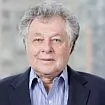Bard Peripheral Vascular, Inc. v. W.L. Gore & Ass., Inc., No. 2014-1114, 2015 U.S. App. LEXIS 473 (Fed. Cir. Jan. 13, 2015) (Prost, C.J.) (Hughes, J., concurrence) (Newman, J., dissent). Click Here for a copy of the opinion.
In 2003, BPV and Goldfarb sued Gore for infringement of U.S. Pat. No. 6,436,135, which covered prosthetic vascular grafts made of highly expanded polytetrafluoroethylene (ePTFE). A jury found the patent valid and willfully infringed. Gore appealed, and the Federal Circuit panel affirmed. The en banc court granted rehearing on the willfulness issue. The panel remanded, holding that "the objective determination of recklessness, even though predicated on underlying mixed questions of law and fact, is best decided by the judge as a question of law subject to de novo review." The district court then found that Gore "could not have realistically expected its defenses to succeed."
Gore appealed again and argued that neither Goldfarb nor BPV had standing to sue. The Federal Circuit determined that it was bound by the prior panel's implicit determination of standing and jurisdiction, because Gore raised no new facts and argued the same standing theory that failed to succeed below. According to Gore, inventor Goldfarb granted substantial rights in the patent to Bard in a virtual assignment, when Bard transferred its interest to BPV. Because Bard failed to memorialize the transfer in a written instrument, BVP's rights were deficient, including its right to sue. However, the Federal Circuit found no basis to conclude that Goldfarb had transferred "all substantial rights" to Bard. In addition, the transfer of interest between Bard and BPV was memorialized later and well before the suit was filed.
Regarding willful infringement , Gore argued that its infringement was not willful because it believed the patent was invalid for non-joinder of an inventor, Peter Cooper, who "supplied the particular ePTFE tubing that Goldfarb used in making his successful vascular graft." Under Federal Circuit law, the court asked: (1) what constitutes the "definite and permanent idea" of the invention at issue and (2) whether Cooper and Goldfarb acted in concert to jointly arrive at that idea.
The court determined that the invention "was not merely the use of ePTFE in vascular grafts" but the "dimensions of fibril length that are essential for the successful graft." Also, Cooper "had not yet conceived the invention" when he provided the tubing, and "he was not aware of the fibril lengths of the material he was sending to Goldfarb." Even after Cooper conceived the invention, he "had 'minimal contact' with Goldfarb on the subject of the fibril length limitation." Based on this record, the Federal Circuit held that Cooper and Goldfarb "independently conceived of the fibril length limitation." In other words, "Cooper and Goldfarb did not collaborate, communicate, nor in any way jointly arrive at the recognition that fibril length was significant for graft success." Reviewing the record under the de novo standard, the Federal Circuit affirmed the district court's conclusion that Gore's defense on inventorship grounds was not susceptible to a reasonable conclusion that the patent was invalid.
In a concurring opinion, Judge Hughes agreed with the majority regarding the outcome of the case, but he urged the full court to review the law on willfulness in light of the recent Supreme Court decisions, Highmark Inc. v. Allied Health Management Sys., Inc., 134 S. Ct. 1744 (2014) and Octane Fitness, LLC v. ICON Health & Fitness, Inc., 134 S. Ct. 1749 (2014), which called into question the Federal Circuit's two-part test for determining willfulness and de novo standard of review. He believed that "a more deferential standard of review" is better for reviewing mixed questions of law and fact, as suggested by the Supreme Court in Highmark.
Judge Newman dissented, and accused the majority of not undertaking a de novo review according to precedent. The majority "[did] not review the evidence and apply the law objectively" but "merely searche[d] for and recite[d] adverse evidence." The question of willful infringement is not "whether the district court's decision of law can be found supported by substantial evidence" but "whether the accused infringer raised a substantial question of invalidity or unenforceability regarding the '135 patent." According to the dissent, as a matter of law, the patent owner's required showing of objective recklessness for willful infringement is not met "when the patent is reasonably subject to challenge," which occurred in this case. Judge Newman argued that Gore raised several substantial questions of validity and enforceability and credited Gore's inventorship defense as "quite viable" and "raise[d] a substantial question of validity."
The content of this article is intended to provide a general guide to the subject matter. Specialist advice should be sought about your specific circumstances.




